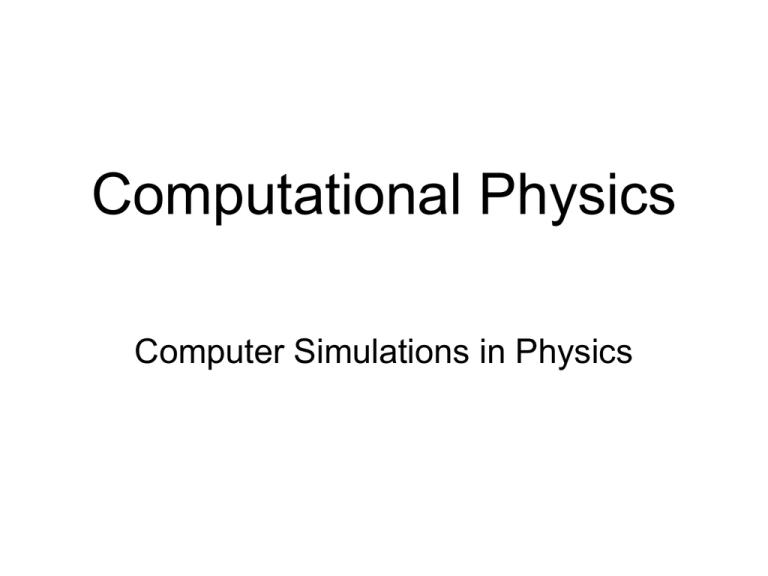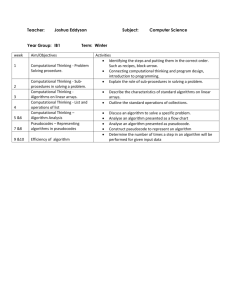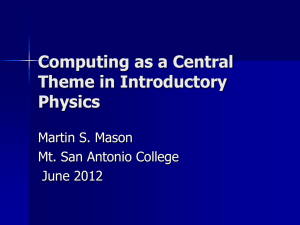Computational Physics
advertisement

Computational Physics Computer Simulations in Physics Computational physics • Computational physics is the study and implementation of numerical algorithms to solve problems in Physics for which a quantitative theory already exists. • Computational physics is the intermediate branch between theoretical and experimental physics Quantitative Theory + +Experiment Conception + +Computer = =Numerical Experiment= =Computer Experiment= =Computational Experiment Applications of computational physics Computation now represents an essential component of modern research in: • accelerator physics • Astrophysics • fluid mechanics • lattice field theory/lattice gauge theory (especially lattice quantum chromodynamics), • plasma physics (see plasma modeling) • solid state physics Molecular Dynamics Simulations F = ma miai = Fi1 + Fi2 + Fi3 + … + FiN, where i = 1, 2, …, N; N>100 Ion Formation from Charged Nanodroplets in Electrospray Ionization Simulate the solvatochromism of betaine-30 in BMIM[PF6] • Solvatochromism is the ability of a chemical substance to change color due to a change in solvent polarity. A water molecule, a commonlyused example of polarity. The two charges are present with a negative charge in the middle (red shade), and a positive charge at the ends (blue shade). betaine-30 Time-Dependence of The Spectral Shift Direction between positions of ion center in basic and excited state Electrical Field Znamenskiy, V. S.; Green, M. E. Topological Changes of Hydrogen Bonding of Water with Acetic Acid: AIM and NBO Studies. J. Phys. Chem. A.; 2004; 108(31); 65436553. Quantum Calculations on Hydrogen Bonds in Certain Water Clusters Show Cooperative Effects E(D) = C1D +C2D2 2











